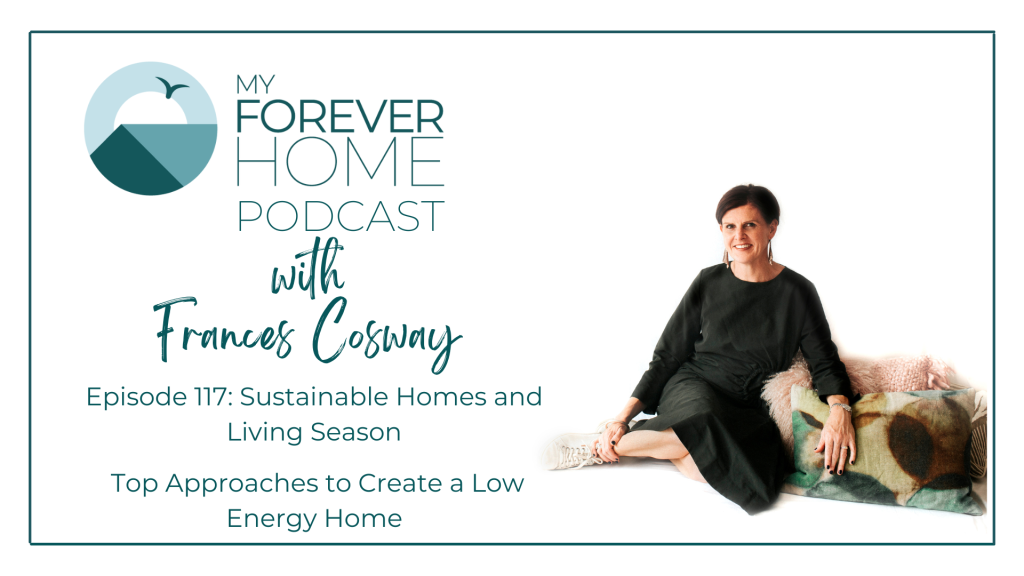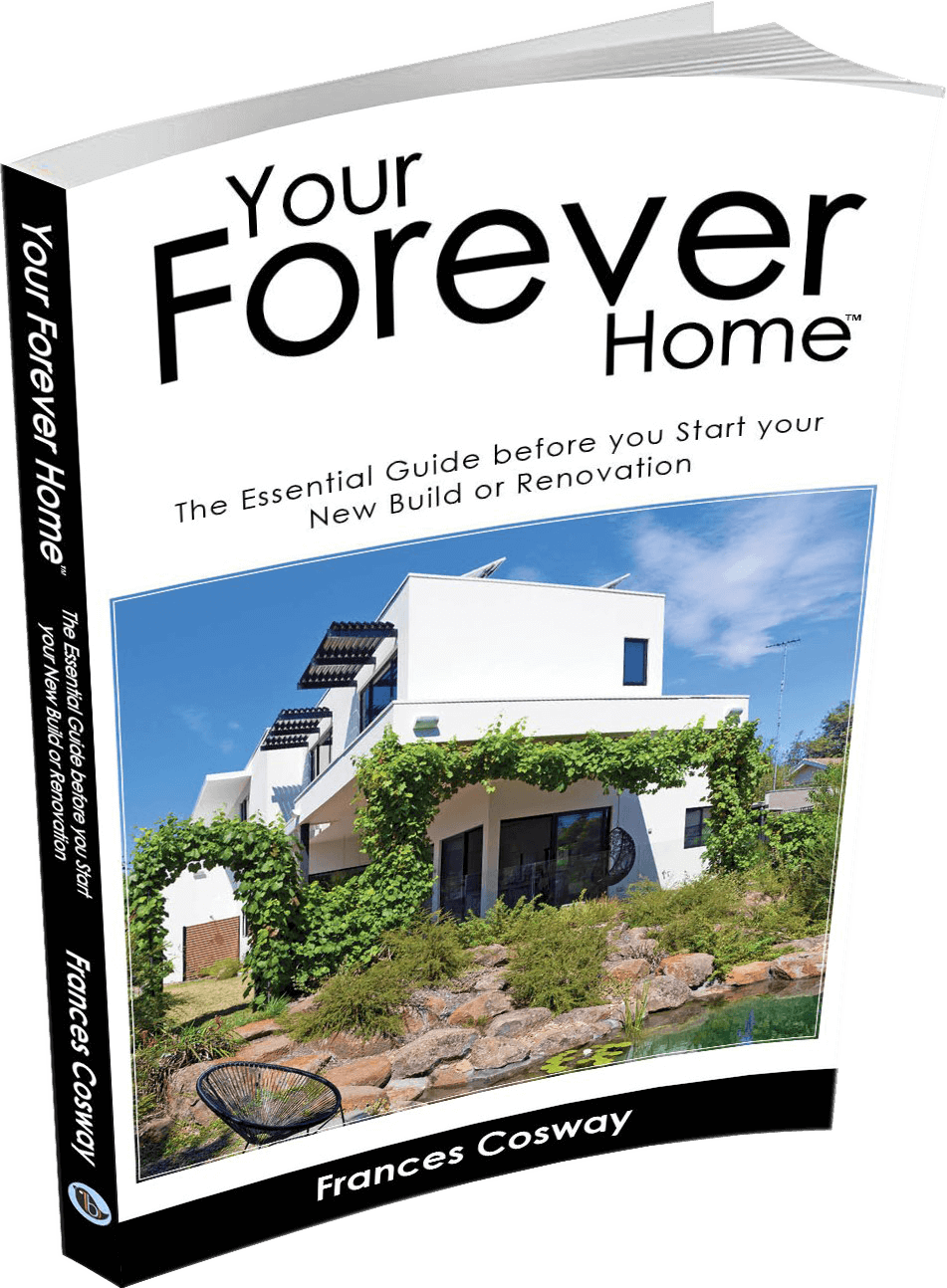Learn the best ways to create or improve the energy load in your home in this practical and informative episode of the podcast with Anna Cumming, Editor of Sanctuary Magazine.
Frances and Anna discuss how you can design, improve, renovate or build a home to create a low impact, sustainable and low energy home that doesn’t have to break the bank.
From the 7 star natars ratings, how to brief your designer and go shopping for an energy efficient home, right through to the reasons for only going electric and eliminating gas.
A great episode if you’re looking at making small energy efficient changes, right through to designing a new low energy home.





